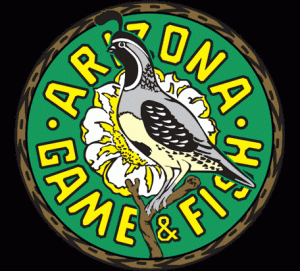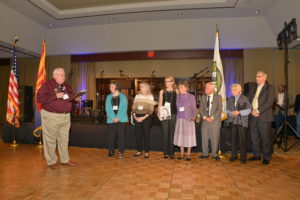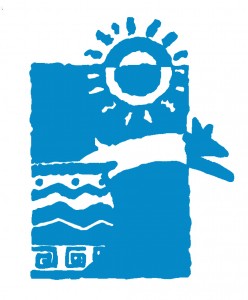Source: Arizona Game and Fish Department release – March 19, 2018
On March 7, 2018 at the Arizona Game and Fish Commission meeting held in Douglas, Arizona, the 2018 Heritage Fund Grants were announced. Heritage Fund money comes from Arizona Lottery ticket sales and was established by voter initiative in 1990. Heritage funding goes toward conservation efforts such as protecting endangered species, educating students and the general public about wildlife and the outdoors, and creating new opportunities for outdoor recreation.
Heritage Fund Grants were announced. Heritage Fund money comes from Arizona Lottery ticket sales and was established by voter initiative in 1990. Heritage funding goes toward conservation efforts such as protecting endangered species, educating students and the general public about wildlife and the outdoors, and creating new opportunities for outdoor recreation.
The Heritage Fund Grant Program was established by the Arizona Game and Fish Department in 1992 as part of the overall Heritage Fund program. The grants program initially was developed as a way to promote outreach in order to enhance important partnerships and generate fresh approaches in support of the department’s mission. Since inception, the department has had the opportunity to award more than $16 million through the Heritage Fund grants program and support more than 800 projects throughout the state.
A total of $412,000 was available for the 2018 grant cycle and was awarded through a competitive application process in various categories (Environmental Education, Outdoor Education, Schoolyard Habitat, Urban Wildlife/Habitat, Public Access, and IIAPM). This year the agency scored 54 Heritage grant proposals. Below are the grant awardees and the grant amount awarded.
Outdoor Education (OE) AZGFD scored seven proposals and the amount available is $16,000. The following five applicants are awarded a 2018 Outdoor Education Heritage Grant:
- Pendergast Elementary School District, Copper King, for the project titled “Copper King STEAM Goes Overboard.” The award amount is $ 2,500.00.
- Flagstaff Unified School District, Eva Marshall Magnet Elementary School, for the project titled “Marshall’s 2nd Grade Outdoor Curriculum Experience.” The award amount is $ 2,276.00.
- Oak Creek Watershed Council, for the project titled “Oak Creek Water Quality Field Days.” The award amount is $ 2,170.00.
- Gilbert Public Schools, Superstition Springs Elementary School, for the project titled “Second Grade Butterfly Wonderland Field Trip.” The award amount is $ 800.00.
- Arizona Trail Association, for the project titled “Arizona Trail Wildlife CAM (Conservation and Monitoring).” The award amount is $ 2,500.00.
Environmental Education (EE) the agency scored a total of nine proposals and the amount  available is $16,000. The following four applicants are awarded a 2018 Environmental Education Heritage Grant:
available is $16,000. The following four applicants are awarded a 2018 Environmental Education Heritage Grant:
- Arizona Board of Regents on Behalf of ASU, Tempe and Polytechnic Campuses, for the project titled “Cultivating Life in the Sonoran Desert.” The award amount is $6,825.00.
- Arizona Wildlife Federation, for the project titled “Audio Guides to the Raymond Wildlife Area and Morman Lake Arizona Watchable Wildlife Experience.” The award amount is $7,665.00.
- Arizona State Parks, Red Rock State Park, for the project titled “Wildlife Tracking with Technology.” The award amount is $2,250.00.
- Snowflake Unified School District, Snowflake Jr. High, for the project titled “Technology and Wildlife Collision Reduction.” The award amount is $5,000.00.
Schoolyard Habitat (SCHOOLYARD) scored a total of five proposals and the amount available is $30,000. The following four applicants are awarded a 2018 Schoolyard Heritage Grant:
- Wickenburg Conservation Foundation, for the project titled “Outdoor Environmental Classroom.” The award amount is $1,715.00.
- Pine Forest School, for the project titled “Cedar Forest’s Children’s Garden: Schoolyard Wildlife Habitat and Learning Wonderland.” The award amount is $10,000.00.
- Osborn School District, for the project titled “Desert Tortoise Habitat to Facilitate Outdoor Learning at Solano Elementary School.” The award amount is $1,000.00.
- Maine Consolidated School District, for the project titled “Northern Arizona Bat Habitat and Sanctuary.” The award amount is $1,329.00.
Urban Wildlife (URBAN) We scored a total of twenty proposals and the amount available is $100,000. The following five applicants are awarded a 2018 URBAN Heritage Grant:
- Southwest Wings Birding and Nature Festival, for the project titled “Southwest Wings Birding and Nature Festival: Wildlife Focused Festival.” The award amount is $5,000.00.
- City of Phoenix, Parks and Recreation, for the project titled “Papago Park All-Access Fishing Dock.” The award amount is $33,000.00.
- Willow Bend Environmental Education Center, for the project titled “Habitat Restoration and Watchable Wildlife Enhancement at Sawmill/Willow Bend AWWE Site.” The award amount is $38,337.00.
- Friends of Verde River Greenway, for the project titled “Verde Tour-An Addition to the Arizona Watchable Wildlife Experience Program – Phase 1.” The award amount is $14,166.00.
- Catalina Foothills School District, for the project titled “Critter Cams for Kids.” The award amount is $4,475.00.
Public Access (ACCESS) We scored a total of four proposals and the amount available is $50,000. The following two applicants are awarded a 2018 ACCESS Heritage Grant:
- Town of Sahuarita, for the project titled “Sahuarita Lake Public Access for Persons with Disabilities Phase 2.” The award amount is $7,705.00.
- City of Holbrook, for the project titled “Holbrook’s Public Access to Recreation Area.” The award amount is $42,165.00.
Identification, Inventory, Acquisition, Protection and Management (IIAPM) We scored a total of nine proposals and the amount available is $200,000. The following four applicants are awarded a 2018 IIAPM Heritage Grant:
- Arizona Board of Regents, University of Arizona, for the project titled “Status, Distribution, Habitat, and Stressors of the Sonoran Talussnail.” The award amount is $40,301.00
- Phoenix Zoo, for the project titled “Monitoring Fecal Gluticosteroids and Behavior to Assist in Developing a Propagation for Release Program for the Critically Endangered Mt. Graham Red Squirrel.” The award amount is $57,804.00.
- Arizona Board of Regents, University of Arizona, for the project titled “Soft-release Translocation Techniques to Maximize Fidelity to Release Site in Red Squirrels.” The award amount is $61,895.00.
- Idaho Department of Fish and Game, for the project titled “Development of YY Male Technology for Eradicating Undesirable Invasive Fish Populations in Arizona.” The award amount is $40,000.00.



You must be logged in to post a comment.